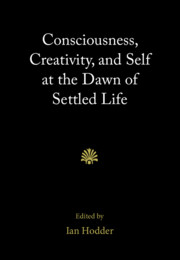Book contents
- Consciousness, Creativity, and Self at the Dawn of Settled Life
- Consciousness, Creativity, and Self at the Dawn of Settled Life
- Copyright page
- Contents
- Contributors
- Acknowledgments
- Part I Introduction to the Themes, Site, and Region
- 1 Introduction to the Themes of the Volume
- 2 Hunter-Gatherer Home-Making? Building Landscape and Community in the Epipaleolithic
- Part II Higher Levels of Consciousness
- Part III Greater Innovation and Creativity
- Part IV Greater Awareness of an Integrated Personal Self
- Notes
- Index
- References
2 - Hunter-Gatherer Home-Making? Building Landscape and Community in the Epipaleolithic
from Part I - Introduction to the Themes, Site, and Region
Published online by Cambridge University Press: 22 February 2020
- Consciousness, Creativity, and Self at the Dawn of Settled Life
- Consciousness, Creativity, and Self at the Dawn of Settled Life
- Copyright page
- Contents
- Contributors
- Acknowledgments
- Part I Introduction to the Themes, Site, and Region
- 1 Introduction to the Themes of the Volume
- 2 Hunter-Gatherer Home-Making? Building Landscape and Community in the Epipaleolithic
- Part II Higher Levels of Consciousness
- Part III Greater Innovation and Creativity
- Part IV Greater Awareness of an Integrated Personal Self
- Notes
- Index
- References
Summary
This chapter stems from a paper given at the “Consciousness and Creativity at the Dawn of Settled Life: The Test-Case of Çatalhöyük” workshop held in Cambridge, UK, in July 2017. This workshop focused on several key debates related to possible changes in human cognition at the onset of the Neolithic period. To address these workshop themes, I explore whether the Neolithic represents a cognitive “break” from cultural practices of preceding hunter-gatherers, specifically asking whether the Neolithic is a key “moment” marked by critical changes in (1) ways of perceiving and using space (e.g., place-making, built environment, sedentism), (2) innovation and creativity (e.g., new technologies and symbolic expressions, including burials), or (3) greater interaction between individuals and groups (e.g., aggregation, new social organizations, long-distance exchange networks, social interactions networks). As a case study of place-making and the creation of community in the Epipaleolithic (EP; 23,000–11,500 cal BP), the site of Kharaneh IV provides a rich dataset to explore the nature of pre-Neolithic dwelling, including how so-called ephemeral structures can be considered as economically, socially, and symbolically charged spaces (even “homes”) and how the spaces between sites – “the landscape” – is full of “places” where the concept of dwelling can also apply. The former is accomplished through examination of the construction, use, and destruction of hut structures from the Early EP occupations, while the latter is accomplished through examination of the connections between Kharaneh IV and the surrounding landscape, including other EP sites, documented through material culture and resource use. I suggest here similarities between the highly socialized and built environments of farmers and hunter-gatherers – in this sense, hunter-gatherers also created a built environment. Rather than revisit the continued debates around the nature of the transition to agriculture and post-Pleistocene lifeways, adeptly summarized elsewhere (Asouti and Fuller, 2013; Belfer-Cohen and Goring-Morris, 2011; Finlayson, 2013; Finlayson and Makarewicz, 2013; Goring-Morris and Belfer-Cohen, 2011; Price and Bar-Yosef, 2011; Watkins, 2013; Zeder, 2011), instead I focus here on the treatment of entirely hunter-gatherer places occupied by peoples without intent to “become” Neolithic, thereby, addressing the idea of a Neolithic “break” and favoring the continuous nature of these changes. Following the suggestion by Finlayson and Warren (2010), I caution against a dichotomous view of EP hunter-gatherers and Neolithic farmers in Southwest Asia, with the latter presumptively marking the beginning of the so-called modern mind, and I do so by exhibiting the complexity of EP behaviors related to place-making, home-making, dwelling, and the creation of communities within the framework of entirely hunter-gatherer worldviews.
- Type
- Chapter
- Information
- Publisher: Cambridge University PressPrint publication year: 2020



